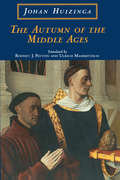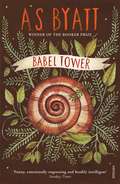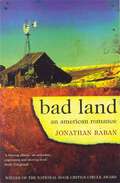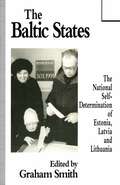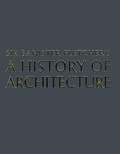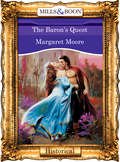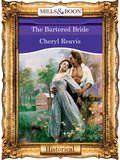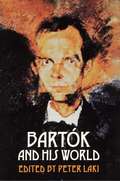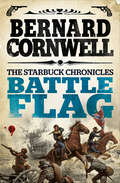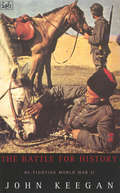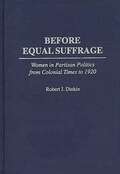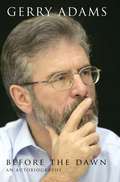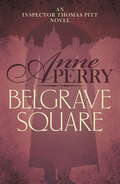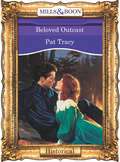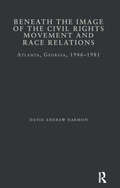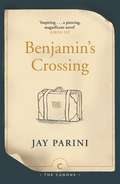- Table View
- List View
The Autumn of the Middle Ages
by Johan Huizinga"Here is the first full translation into English of one of the 20th century's few undoubted classics of history." —Washington Post Book World The Autumn of the Middle Ages is Johan Huizinga's classic portrait of life, thought, and art in fourteenth- and fifteenth-century France and the Netherlands. Few who have read this book in English realize that The Waning of the Middle Ages, the only previous translation, is vastly different from the original Dutch, and incompatible will all other European-language translations. For Huizinga, the fourteenth- and fifteenth-century marked not the birth of a dramatically new era in history—the Renaissance—but the fullest, ripest phase of medieval life and thought. However, his work was criticized both at home and in Europe for being "old-fashioned" and "too literary" when The Waning of the Middle Ages was first published in 1919. In the 1924 translation, Fritz Hopman adapted, reduced and altered the Dutch edition—softening Huizinga's passionate arguments, dulling his nuances, and eliminating theoretical passages. He dropped many passages Huizinga had quoted in their original old French. Additionally, chapters were rearranged, all references were dropped, and mistranslations were introduced. This translation corrects such errors, recreating the second Dutch edition which represents Huizinga's thinking at its most important stage. Everything that was dropped or rearranged has been restored. Prose quotations appear in French, with translations preprinted at the bottom of the page, mistranslations have been corrected. "The advantages of the new translation are so many. . . . It is one of the greatest, as well as one of the most enthralling, historical classics of the twentieth century, and everyone will surely want to read it in the form that was obviously intended by the author." —Francis Haskell, New York Review of Books "A once pathbreaking piece of historical interpretation. . . . This new translation will no doubt bring Huizinga and his pioneering work back into the discussion of historical interpretation." —Rosamond McKitterick, New York Times Book Review
The Autumn of the Middle Ages
by Johan Huizinga"Here is the first full translation into English of one of the 20th century's few undoubted classics of history." —Washington Post Book World The Autumn of the Middle Ages is Johan Huizinga's classic portrait of life, thought, and art in fourteenth- and fifteenth-century France and the Netherlands. Few who have read this book in English realize that The Waning of the Middle Ages, the only previous translation, is vastly different from the original Dutch, and incompatible will all other European-language translations. For Huizinga, the fourteenth- and fifteenth-century marked not the birth of a dramatically new era in history—the Renaissance—but the fullest, ripest phase of medieval life and thought. However, his work was criticized both at home and in Europe for being "old-fashioned" and "too literary" when The Waning of the Middle Ages was first published in 1919. In the 1924 translation, Fritz Hopman adapted, reduced and altered the Dutch edition—softening Huizinga's passionate arguments, dulling his nuances, and eliminating theoretical passages. He dropped many passages Huizinga had quoted in their original old French. Additionally, chapters were rearranged, all references were dropped, and mistranslations were introduced. This translation corrects such errors, recreating the second Dutch edition which represents Huizinga's thinking at its most important stage. Everything that was dropped or rearranged has been restored. Prose quotations appear in French, with translations preprinted at the bottom of the page, mistranslations have been corrected. "The advantages of the new translation are so many. . . . It is one of the greatest, as well as one of the most enthralling, historical classics of the twentieth century, and everyone will surely want to read it in the form that was obviously intended by the author." —Francis Haskell, New York Review of Books "A once pathbreaking piece of historical interpretation. . . . This new translation will no doubt bring Huizinga and his pioneering work back into the discussion of historical interpretation." —Rosamond McKitterick, New York Times Book Review
The Autumn of the Middle Ages
by Johan Huizinga"Here is the first full translation into English of one of the 20th century's few undoubted classics of history." —Washington Post Book World The Autumn of the Middle Ages is Johan Huizinga's classic portrait of life, thought, and art in fourteenth- and fifteenth-century France and the Netherlands. Few who have read this book in English realize that The Waning of the Middle Ages, the only previous translation, is vastly different from the original Dutch, and incompatible will all other European-language translations. For Huizinga, the fourteenth- and fifteenth-century marked not the birth of a dramatically new era in history—the Renaissance—but the fullest, ripest phase of medieval life and thought. However, his work was criticized both at home and in Europe for being "old-fashioned" and "too literary" when The Waning of the Middle Ages was first published in 1919. In the 1924 translation, Fritz Hopman adapted, reduced and altered the Dutch edition—softening Huizinga's passionate arguments, dulling his nuances, and eliminating theoretical passages. He dropped many passages Huizinga had quoted in their original old French. Additionally, chapters were rearranged, all references were dropped, and mistranslations were introduced. This translation corrects such errors, recreating the second Dutch edition which represents Huizinga's thinking at its most important stage. Everything that was dropped or rearranged has been restored. Prose quotations appear in French, with translations preprinted at the bottom of the page, mistranslations have been corrected. "The advantages of the new translation are so many. . . . It is one of the greatest, as well as one of the most enthralling, historical classics of the twentieth century, and everyone will surely want to read it in the form that was obviously intended by the author." —Francis Haskell, New York Review of Books "A once pathbreaking piece of historical interpretation. . . . This new translation will no doubt bring Huizinga and his pioneering work back into the discussion of historical interpretation." —Rosamond McKitterick, New York Times Book Review
The Autumn of the Middle Ages
by Johan Huizinga"Here is the first full translation into English of one of the 20th century's few undoubted classics of history." —Washington Post Book World The Autumn of the Middle Ages is Johan Huizinga's classic portrait of life, thought, and art in fourteenth- and fifteenth-century France and the Netherlands. Few who have read this book in English realize that The Waning of the Middle Ages, the only previous translation, is vastly different from the original Dutch, and incompatible will all other European-language translations. For Huizinga, the fourteenth- and fifteenth-century marked not the birth of a dramatically new era in history—the Renaissance—but the fullest, ripest phase of medieval life and thought. However, his work was criticized both at home and in Europe for being "old-fashioned" and "too literary" when The Waning of the Middle Ages was first published in 1919. In the 1924 translation, Fritz Hopman adapted, reduced and altered the Dutch edition—softening Huizinga's passionate arguments, dulling his nuances, and eliminating theoretical passages. He dropped many passages Huizinga had quoted in their original old French. Additionally, chapters were rearranged, all references were dropped, and mistranslations were introduced. This translation corrects such errors, recreating the second Dutch edition which represents Huizinga's thinking at its most important stage. Everything that was dropped or rearranged has been restored. Prose quotations appear in French, with translations preprinted at the bottom of the page, mistranslations have been corrected. "The advantages of the new translation are so many. . . . It is one of the greatest, as well as one of the most enthralling, historical classics of the twentieth century, and everyone will surely want to read it in the form that was obviously intended by the author." —Francis Haskell, New York Review of Books "A once pathbreaking piece of historical interpretation. . . . This new translation will no doubt bring Huizinga and his pioneering work back into the discussion of historical interpretation." —Rosamond McKitterick, New York Times Book Review
The Autumn of the Middle Ages
by Johan Huizinga"Here is the first full translation into English of one of the 20th century's few undoubted classics of history." —Washington Post Book World The Autumn of the Middle Ages is Johan Huizinga's classic portrait of life, thought, and art in fourteenth- and fifteenth-century France and the Netherlands. Few who have read this book in English realize that The Waning of the Middle Ages, the only previous translation, is vastly different from the original Dutch, and incompatible will all other European-language translations. For Huizinga, the fourteenth- and fifteenth-century marked not the birth of a dramatically new era in history—the Renaissance—but the fullest, ripest phase of medieval life and thought. However, his work was criticized both at home and in Europe for being "old-fashioned" and "too literary" when The Waning of the Middle Ages was first published in 1919. In the 1924 translation, Fritz Hopman adapted, reduced and altered the Dutch edition—softening Huizinga's passionate arguments, dulling his nuances, and eliminating theoretical passages. He dropped many passages Huizinga had quoted in their original old French. Additionally, chapters were rearranged, all references were dropped, and mistranslations were introduced. This translation corrects such errors, recreating the second Dutch edition which represents Huizinga's thinking at its most important stage. Everything that was dropped or rearranged has been restored. Prose quotations appear in French, with translations preprinted at the bottom of the page, mistranslations have been corrected. "The advantages of the new translation are so many. . . . It is one of the greatest, as well as one of the most enthralling, historical classics of the twentieth century, and everyone will surely want to read it in the form that was obviously intended by the author." —Francis Haskell, New York Review of Books "A once pathbreaking piece of historical interpretation. . . . This new translation will no doubt bring Huizinga and his pioneering work back into the discussion of historical interpretation." —Rosamond McKitterick, New York Times Book Review
The Autumn of the Middle Ages
by Johan Huizinga"Here is the first full translation into English of one of the 20th century's few undoubted classics of history." —Washington Post Book World The Autumn of the Middle Ages is Johan Huizinga's classic portrait of life, thought, and art in fourteenth- and fifteenth-century France and the Netherlands. Few who have read this book in English realize that The Waning of the Middle Ages, the only previous translation, is vastly different from the original Dutch, and incompatible will all other European-language translations. For Huizinga, the fourteenth- and fifteenth-century marked not the birth of a dramatically new era in history—the Renaissance—but the fullest, ripest phase of medieval life and thought. However, his work was criticized both at home and in Europe for being "old-fashioned" and "too literary" when The Waning of the Middle Ages was first published in 1919. In the 1924 translation, Fritz Hopman adapted, reduced and altered the Dutch edition—softening Huizinga's passionate arguments, dulling his nuances, and eliminating theoretical passages. He dropped many passages Huizinga had quoted in their original old French. Additionally, chapters were rearranged, all references were dropped, and mistranslations were introduced. This translation corrects such errors, recreating the second Dutch edition which represents Huizinga's thinking at its most important stage. Everything that was dropped or rearranged has been restored. Prose quotations appear in French, with translations preprinted at the bottom of the page, mistranslations have been corrected. "The advantages of the new translation are so many. . . . It is one of the greatest, as well as one of the most enthralling, historical classics of the twentieth century, and everyone will surely want to read it in the form that was obviously intended by the author." —Francis Haskell, New York Review of Books "A once pathbreaking piece of historical interpretation. . . . This new translation will no doubt bring Huizinga and his pioneering work back into the discussion of historical interpretation." —Rosamond McKitterick, New York Times Book Review
Babel Tower (The Frederica Potter Novels)
by A S ByattAfter her husband becomes violent, Frederica Potter flees with her young son to London. There, she secures a teaching position in an art school, and finds herself surrounded by painters and poets with dreams of rebellion. Then Frederica meets Jude Mason, the strange and charismatic author of a wildly controversial novel. When her husband files for divorce and Jude becomes the target of a high-profile court case, Frederica’s life threatens to spiral out of control.THE THIRD FREDERICA POTTER NOVEL
Bad Land: An American Romance
by Jonathan RabanJonathan Raban takes you on an enthralling journey into the least populated and least known region in the United States, the Great Plains of Montana, and finds there the heart and soul of the country.Bringing to life the extraordinary landscape of the prairie and the homesteaders whose dreams foundered there, and reaching through history to the present day, Bad Land uncovers the dangerous legacy of American innocence gone sour.'Bad Land should be recognized as a blazing classic' – Sunday Telegraph
The Baltic States: The National Self-Determination of Estonia, Latvia and Lithuania
by Graham SmithThe Baltic States examines the struggles of the Baltic peoples for national self-determination. It is divided into two parts. Part one explores their nationalist awakening, how the realization of national self-determination during the inter-war years of independent statehood manifested itself, and the impact that fifty years of subsequent incorporation into the Soviet Union has had on Baltic politics and national cultures. Part two examines the nationalist reawakening in the late 1980s, the re-establishment of Baltic national self-governance in 1990-91 and the problems that these countries now face as sovereign entities.
Banister Fletcher's A History Of Architecture (Part 1 of 7) (PDF)
by Banister Fletcher Dan Cruickshank Peter Blundell Jones Kenneth Frampton Andrew SaintThe 20th edition of Sir Banister Fletcher's A History of Architecture is the first major work of history to include an overview of the architectural achievements of the 20th Century. Banister Fletcher has been the standard one volume architectural history for over 100 years and continues to give a concise and factual account of world architecture from the earliest times. In this twentieth and centenary edition, edited by Dan Cruickshank with three consultant editors and fourteen new contributors, chapters have been recast and expanded and a third of the text is new. * There are new chapters on the twentieth-century architecture of the Middle East (including Israel), South-east Asia, Hong Kong, Japan and Korea, the Indian subcontinent, Russia and the Soviet Union, Eastern Europe and Latin America. * The chapter on traditional architecture of India has been rewritten and the section on traditional Chinese architecture has been expanded, both with new specially commissioned drawings * The architecture of the Americas before 1900 has been enlarged to include, for the first time, detailed coverage of Latin America and the Caribbean * The book's scope has been widened to include more architecture from outside Europe * The bibliography has been expanded into a separate section and is a key source of information on every period of world architecture * The coverage of the 20th century architecture of North America has been divided into two chapters to allow fuller coverage of contemporary works * 20th century architecture of Western Europe has been radically recast * For the first time the architecture of the twentieth century is considered as a whole and assessed in an historical perspective * Coverage has been extended to include buildings completed during the last ten years * The coverage of Islamic architecture has been increased and re-organised to form a self contained section This unique reference book places buildings in their social, cultural and historical settings to describe the main patterns of architectural development, from Prehistoric to the International Style. Again in the words of Sir Banister Fletcher, this book shows that 'Architecture . . . provides a key to the habits, thoughts and aspirations of the people, and without a knowledge of this art the history of any period lacks that human interest with which it should be invested. '
Banister Fletcher's A History Of Architecture (Part 2 of 7) (PDF)
by Banister Fletcher Dan Cruickshank Peter Blundell Jones Kenneth Frampton Andrew SaintThe 20th edition of Sir Banister Fletcher's A History of Architecture is the first major work of history to include an overview of the architectural achievements of the 20th Century. Banister Fletcher has been the standard one volume architectural history for over 100 years and continues to give a concise and factual account of world architecture from the earliest times. In this twentieth and centenary edition, edited by Dan Cruickshank with three consultant editors and fourteen new contributors, chapters have been recast and expanded and a third of the text is new. * There are new chapters on the twentieth-century architecture of the Middle East (including Israel), South-east Asia, Hong Kong, Japan and Korea, the Indian subcontinent, Russia and the Soviet Union, Eastern Europe and Latin America. * The chapter on traditional architecture of India has been rewritten and the section on traditional Chinese architecture has been expanded, both with new specially commissioned drawings * The architecture of the Americas before 1900 has been enlarged to include, for the first time, detailed coverage of Latin America and the Caribbean * The book's scope has been widened to include more architecture from outside Europe * The bibliography has been expanded into a separate section and is a key source of information on every period of world architecture * The coverage of the 20th century architecture of North America has been divided into two chapters to allow fuller coverage of contemporary works * 20th century architecture of Western Europe has been radically recast * For the first time the architecture of the twentieth century is considered as a whole and assessed in an historical perspective * Coverage has been extended to include buildings completed during the last ten years * The coverage of Islamic architecture has been increased and re-organised to form a self contained section This unique reference book places buildings in their social, cultural and historical settings to describe the main patterns of architectural development, from Prehistoric to the International Style. Again in the words of Sir Banister Fletcher, this book shows that 'Architecture . . . provides a key to the habits, thoughts and aspirations of the people, and without a knowledge of this art the history of any period lacks that human interest with which it should be invested. '
Banister Fletcher's A History Of Architecture (Part 3 of 7) (PDF)
by Banister Fletcher Dan Cruickshank Peter Blundell Jones Kenneth Frampton Andrew SaintThe 20th edition of Sir Banister Fletcher's A History of Architecture is the first major work of history to include an overview of the architectural achievements of the 20th Century. Banister Fletcher has been the standard one volume architectural history for over 100 years and continues to give a concise and factual account of world architecture from the earliest times. In this twentieth and centenary edition, edited by Dan Cruickshank with three consultant editors and fourteen new contributors, chapters have been recast and expanded and a third of the text is new. * There are new chapters on the twentieth-century architecture of the Middle East (including Israel), South-east Asia, Hong Kong, Japan and Korea, the Indian subcontinent, Russia and the Soviet Union, Eastern Europe and Latin America. * The chapter on traditional architecture of India has been rewritten and the section on traditional Chinese architecture has been expanded, both with new specially commissioned drawings * The architecture of the Americas before 1900 has been enlarged to include, for the first time, detailed coverage of Latin America and the Caribbean * The book's scope has been widened to include more architecture from outside Europe * The bibliography has been expanded into a separate section and is a key source of information on every period of world architecture * The coverage of the 20th century architecture of North America has been divided into two chapters to allow fuller coverage of contemporary works * 20th century architecture of Western Europe has been radically recast * For the first time the architecture of the twentieth century is considered as a whole and assessed in an historical perspective * Coverage has been extended to include buildings completed during the last ten years * The coverage of Islamic architecture has been increased and re-organised to form a self contained section This unique reference book places buildings in their social, cultural and historical settings to describe the main patterns of architectural development, from Prehistoric to the International Style. Again in the words of Sir Banister Fletcher, this book shows that 'Architecture . . . provides a key to the habits, thoughts and aspirations of the people, and without a knowledge of this art the history of any period lacks that human interest with which it should be invested. '
Banister Fletcher's A History Of Architecture (Part 4 of 7) (PDF)
by Banister Fletcher Dan Cruickshank Peter Blundell Jones Kenneth Frampton Andrew SaintThe 20th edition of Sir Banister Fletcher's A History of Architecture is the first major work of history to include an overview of the architectural achievements of the 20th Century. Banister Fletcher has been the standard one volume architectural history for over 100 years and continues to give a concise and factual account of world architecture from the earliest times. In this twentieth and centenary edition, edited by Dan Cruickshank with three consultant editors and fourteen new contributors, chapters have been recast and expanded and a third of the text is new. * There are new chapters on the twentieth-century architecture of the Middle East (including Israel), South-east Asia, Hong Kong, Japan and Korea, the Indian subcontinent, Russia and the Soviet Union, Eastern Europe and Latin America. * The chapter on traditional architecture of India has been rewritten and the section on traditional Chinese architecture has been expanded, both with new specially commissioned drawings * The architecture of the Americas before 1900 has been enlarged to include, for the first time, detailed coverage of Latin America and the Caribbean * The book's scope has been widened to include more architecture from outside Europe * The bibliography has been expanded into a separate section and is a key source of information on every period of world architecture * The coverage of the 20th century architecture of North America has been divided into two chapters to allow fuller coverage of contemporary works * 20th century architecture of Western Europe has been radically recast * For the first time the architecture of the twentieth century is considered as a whole and assessed in an historical perspective * Coverage has been extended to include buildings completed during the last ten years * The coverage of Islamic architecture has been increased and re-organised to form a self contained section This unique reference book places buildings in their social, cultural and historical settings to describe the main patterns of architectural development, from Prehistoric to the International Style. Again in the words of Sir Banister Fletcher, this book shows that 'Architecture . . . provides a key to the habits, thoughts and aspirations of the people, and without a knowledge of this art the history of any period lacks that human interest with which it should be invested. '
The Baron's Quest (Mills And Boon Vintage 90s Modern Ser.)
by Margaret MooreThe Baron DeGuerre Had Finally Met His Match Though famed for prowess in tourney and war, Etienne DeGuerre now found himself at odds in the Battle of the Sexes. For his opponent, Gabriella Frechette, was a woman of singular beauty… and single-minded resolve. One who had easily stormed his defenses, and laid siege to his unsuspecting heart
The Bartered Bride (Mills And Boon Vintage 90s Modern Ser.)
by Cheryl Reavis"Do We Marry Or Not, Caroline Holt?"
Bartók and His World (The Bard Music Festival #50)
by Peter LakiBéla Bartók, who died in New York fifty years ago this September, is one of the most frequently performed twentieth-century composers. He is also the subject of a rapidly growing critical and analytical literature. Bartók was born in Hungary and made his home there for all but his last five years, when he resided in the United States. As a result, many aspects of his life and work have been accessible only to readers of Hungarian. The main goal of this volume is to provide English-speaking audiences with new insights into the life and reception of this musician, especially in Hungary. Part I begins with an essay by Leon Botstein that places Bartók in a large historical and cultural context. László Somfai reports on the catalog of Bartók's works that is currently in progress. Peter Laki shows the extremes of the composer's reception in Hungary, while Tibor Tallián surveys the often mixed reviews from the American years. The essays of Carl Leafstedt and Vera Lampert deal with his librettists Béla Balázs and Melchior Lengyel respectively. David Schneider addresses the artistic relationship between Bartók and Stravinsky. Most of the letters and interviews in Part II concern Bartók's travels and emigration as they reflected on his personal life and artistic evolution. Part III presents early critical assessments of Bartók's work as well as literary and poetic responses to his music and personality.
Battle Flag (The Starbuck Chronicles #3)
by Bernard CornwellThe third volume in the Starbuck Chronicles. The battle for control of Richmond, the Confederate capital, continues through the hot summer of 1862.
The Battle For History: Refighting World War Two (The\barbara Frum Lecture Ser.)
by John KeeganAlthough 50 years have passed since the end of World War II, there has as yet been no definitive history of that conflict. Existing histories have raised as many questions as they answer: Did Roosevelt have foreknowledge of the attack on Pearl Harbour? Could the Allies have invaded France before 1944? Might bombing the Auschwitz railway have impeded the course of the Holocaust? John Keegan here assesses the literature that has emerged from World War II - and the controversies it has generated - in a book that combines stunning erudition with crisp prose and highly personal discernment.
Before Equal Suffrage: Women in Partisan Politics from Colonial Times to 1920 (Contributions in Women's Studies)
by Robert J. DinkinDispelling the myth that women became involved in partisan politics only after they obtained the vote, this study uses contemporary newspaper sources to show that women were active in the party struggle long before 1920. Although their role was initially limited to attending rallies and hosting picnics, they gradually began to use their pens and voices to support party tickets. By the late 19th century, women spoke at party functions and organized all-female groups to help canvass neighborhoods and get out the vote. In the early suffrage states of the West, they voted in increasing numbers and even held a few offices.Women were particularly active, this book shows, in the minor reformist parties—Populist, Prohibitionist, Socialist, and Progressive—but eventually came to play a role in the major parties as well. Prominent suffrage leaders, such as Elizabeth Cady Stanton and Susan B. Anthony, entered the partisan arena in order to promote their cause. By the time the suffrage amendment was ratified, women were deeply involved in the mainstream political process.
Before the Dawn: An Autobiography
by Gerry AdamsThe controversial autobiography of the man at the heart of Irish Republican politics. Sinn Fein leader Gerry Adams offers his own unique, intimate account of the early years of his career, from his childhood in working-class Belfast to the more turbulent years of social activism that followed. An engaging and revealing self-portrait. Born in West Belfast in 1948 into a family with close ties to both the trade union and republican movements, his childhood, despite its material poverty, he has described in glowing and humorous terms. For many years his voice was banned from radio and television by both the British and Irish governments, while commentators and politicians condemned him and all he stood for. But through those years Brandon published a succession of books which made an important contribution to an understanding of the true circumstances of life and politics in the north of Ireland. In his autobiography, Before the Dawn, Gerry Adams brings a unique perspective to the years of conflict, insurrection and bitter struggle which ensued when peaceful political agitation was met with hysterical reaction and the sectarian tinderbox of Britain's last colony erupted. From the pogroms of 1969 to the hunger strikes of 1981, from the streets of West Belfast to the cages of Long Kesh, his powerful memoir is essential reading for anyone wishing to understand modern Ireland.
Belgrave Square: A gripping mystery of blackmail and murder on the streets of Victorian London (Thomas Pitt Mystery #12)
by Anne PerryWill the hidden layers of conspiracy triumph before Pitt can solve the case? A grisly murder of a moneylender draws Inspector Pitt once more into a world of power and greed in Anne Perry's Belgrave Square. Perfect for fans of C. J. Samson and Sherlock Holmes. '[Anne] Perry's characters are vivid and well-drawn... If you want to be privy to the romance, politics, and scandal of Victorian London, this descriptive, leisurely paced mystery may well be your cup of Earl Grey tea' - Houston Chronicle The murder in Clerkenwell of an obscure moneylender named William Weems brings discreet rejoicing among those whose meagre earnings he so mercilessly devoured. Yet when Inspector Thomas Pitt finds a list including some of London's most distinguished gentlemen in Weems' office, he begins to realize this was no common usurer but a vicious blackmailer. Charlotte Pitt has connections to this distinguished London society, and, at glittering balls and over gossipy tea tables, she begins to perceive a world of passion, power, and greed that the police are seldom permitted to see... What readers are saying about Belgrave Square: 'Brilliant set of books. Will carry on reading them as fast as Anne Perry writes them, they are simply the best''I love all Anne Perry books, this was no exception, [was] sorry when I got to the end''Five stars'
Beloved Outcast (Mills And Boon Vintage 90s Modern Ser.)
by Pat TracyThe Wagons Went West - Without Her, but nothing could stop Victoria Amory from pursuing her "great adventure." Not even a reprobate like Logan Youngblood, whose lazy-lidded gaze and lopsided grin dared her to do things that should have made her blush - but didn't!
Beneath the Image of the Civil Rights Movement and Race Relations: Atlanta, GA 1946-1981 (Studies in African American History and Culture)
by David A. HarmonThis study is the story of the local Civil Rights Movement and race relations in Atlanta, Georgia from 1946 to 1981. Most examinations of the Civil Rights Movement have been written from a national perspective. These studies have presented local African American protest movements as part of a national campaign for civil rights that lasted approximately from 1955, the Montgomery Bus Boycott, to 1968, the assassination of Dr. Martin Luther King, Jr. In this context, demonstrations in Montgomery, Greensboro, Albany, Birmingham, Selma, and Memphis have been viewed as prototypical African American protest, movements and milestones in this national campaign for civil rights. First published in 1996. Routledge is an imprint of Taylor & Francis, an informa company.
Beneath the Image of the Civil Rights Movement and Race Relations: Atlanta, GA 1946-1981 (Studies in African American History and Culture)
by David A. HarmonThis study is the story of the local Civil Rights Movement and race relations in Atlanta, Georgia from 1946 to 1981. Most examinations of the Civil Rights Movement have been written from a national perspective. These studies have presented local African American protest movements as part of a national campaign for civil rights that lasted approximately from 1955, the Montgomery Bus Boycott, to 1968, the assassination of Dr. Martin Luther King, Jr. In this context, demonstrations in Montgomery, Greensboro, Albany, Birmingham, Selma, and Memphis have been viewed as prototypical African American protest, movements and milestones in this national campaign for civil rights. First published in 1996. Routledge is an imprint of Taylor & Francis, an informa company.
Benjamin's Crossing (Canons)
by Jay PariniThere is no such thing as history, you see. It's a dream, perhaps even a dream of a dream . . . Walter Benjamin is dead. One of the most radiant minds of the twentieth century has been snatched away by death in a small town on the border between Spain and France. His thousand-page manuscript, carried the length of France during his flight from the Nazis, has vanished with him, never to be recovered. Jay Parini's extraordinary work traces Benjamin's steps back through time, from the salons of Berlin to the winding roads of Catalonia. A tale of escape and pursuit, Benjamin's Crossing dramatises one of the most moving peripheral episodes of the Holocaust; and above all, it is a love story.
